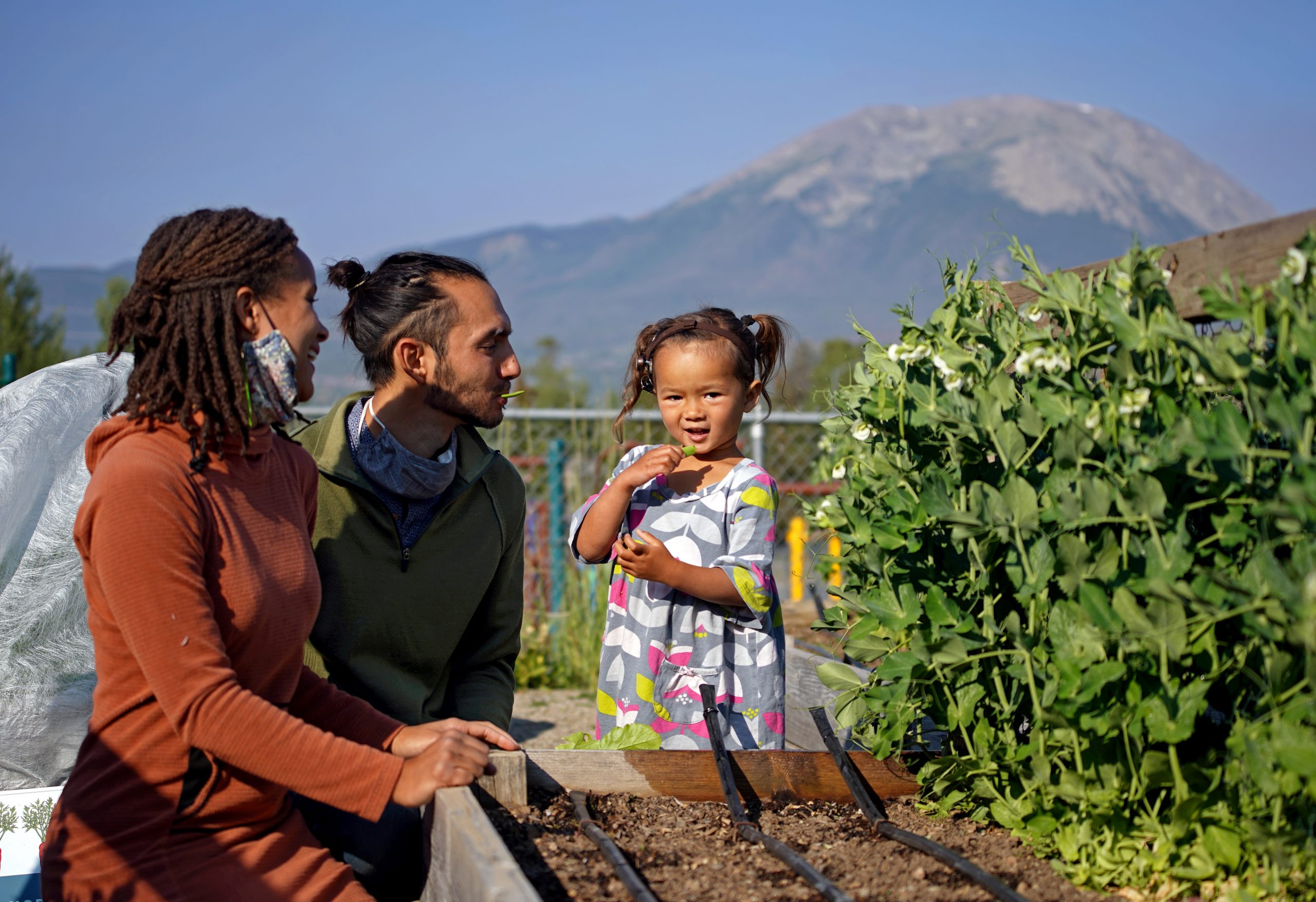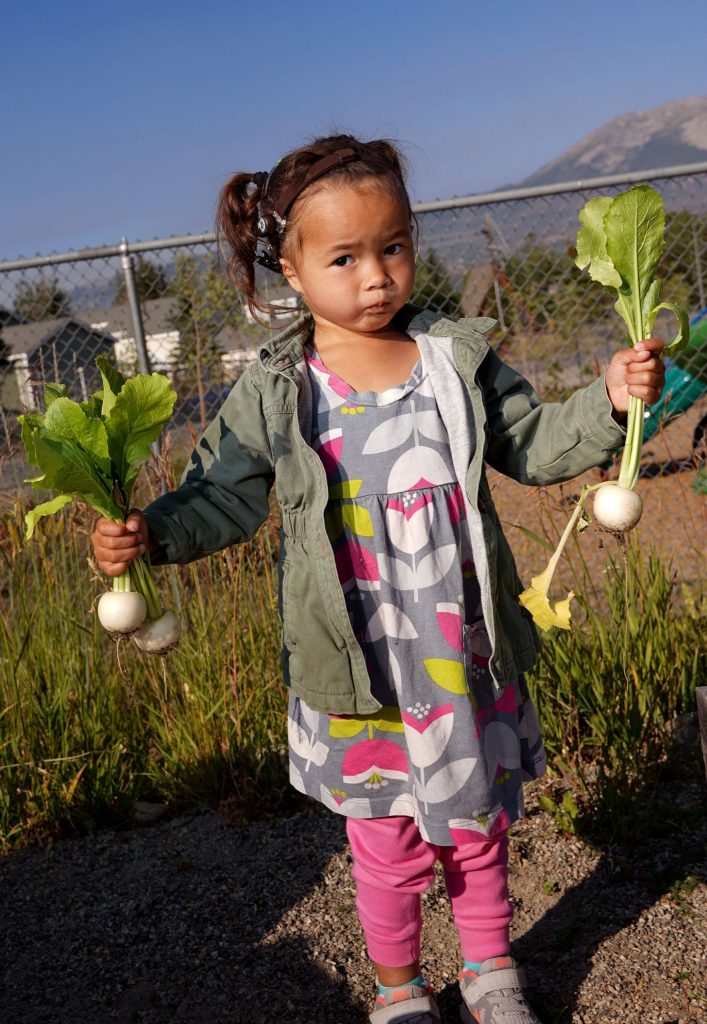
Dear Eartha, The kale I planted in my garden is going crazy, and there’s no way I can eat it all. There’s no issue with me composting it, right?
Congrats on your successful high-altitude garden! Kale and other cool-season veggies thrive in our short mountain summers. So, if you’re up to your ears in leafy greens (or any other vegetables you’re growing at home), I encourage you to donate the extras before composting. Because just like the five Rs of waste reduction, it’s far better to reduce food waste – in this case, by giving it away – instead of pitching it (even if you’re composting).
Feed People First
According to Hunger Free Colorado, a non-profit working to end food insecurity in our state, 33 percent of Coloradans lack reliable access to nutritious food. And nearly 16 percent of Colorado children aren’t getting adequate nutrition due to financial constraints. Closer to home, research by hunger-relief organization Feeding America shows that nearly 10 percent of Summit County residents is food insecure. That means fresh, nutritious food donations are needed right here in our own community.

You might be wondering how or where to donate food from your garden. I’ve got an easy answer: Grow to Share. This food donation and nutritional education program provides boxes of fresh produce to local families in need each week throughout summer. Already this year, a total of 81 produce boxes have been distributed to 57 families.
Grow to Share began in 2014 as a way to reduce food waste in community gardens. Today, thanks to support from individuals along with organizations like St. Anthony Summit Medical Center, the Alexandra Storm Foundation, the Anschutz Family Foundation, and Kroger, High Country Conservation Center’s farmers have resources to grow food specifically for donation. And local gardeners like you can join the club by sharing your extra homegrown veggies.
What happens once the produce is collected? Summit County Women, Infants & Children (WIC) distributes the vegetables and provides families with the knowledge and skills they need to prepare and store it all. And the Family & Intercultural Resource Center distributes any remaining food through their Free Food Market. It’s a classic case of Summit County partners working together to support our neighbors.
How to Donate

Let’s talk donating. It’s as simple as harvesting, bagging, and dropping off your excess produce. Bring fresh-picked vegetables to the Dillon Valley Elementary Garden, located behind the school at 108 Deer Path Road in Dillon, on Mondays from 7:00 a.m. to noon. If staff isn’t on-site to accept your donation, look for the cooler and use the provided bags and labels to identify your donation. Another option is to drop off anytime on Mondays at Nancy’s Garden, located near the Senior Center at 83 Nancy’s Place in Frisco. Look for the cooler and be sure to bag and label your produce. Food is picked up early Tuesdays for distribution.
Keep in mind that drop-offs are only available on Mondays, so to ensure that your food stays fresh, plan to harvest on Monday and drop it off that same day. Getting the timing right ensures that families receive food that looks great, tastes best, and retains the most nutrition. Visit HighCountryConservation.org for more details on donating your garden’s produce.
Need advice on harvesting? Small knives are excellent for picking hearty greens and veggies, while gardening scissors work best for herbs and delicate plants. A lot of vegetables – carrots, radishes, beets, peas, and even all that kale – can simply be pulled or gently snapped. Shake off any dirt, but don’t worry about washing your produce. You can imagine what happens to a bag of wet spinach left sitting around.
Reduce the Waste
You also asked about composting. Let’s say you harvested all that kale and a few weeks later, you uncovered a bag of soggy greens in the back of the fridge. Composting those soggy greens is far better than trashing them. And you know what’s even better than composting? Reducing waste in the first place. So, before your next trip to the grocery store produce aisle, plan ahead to ensure you’ll only buy what you’ll use. And when it comes to planting your garden next year, plan to grow for yourself, plus some extras for our neighbors who benefit from Grow to Share.
